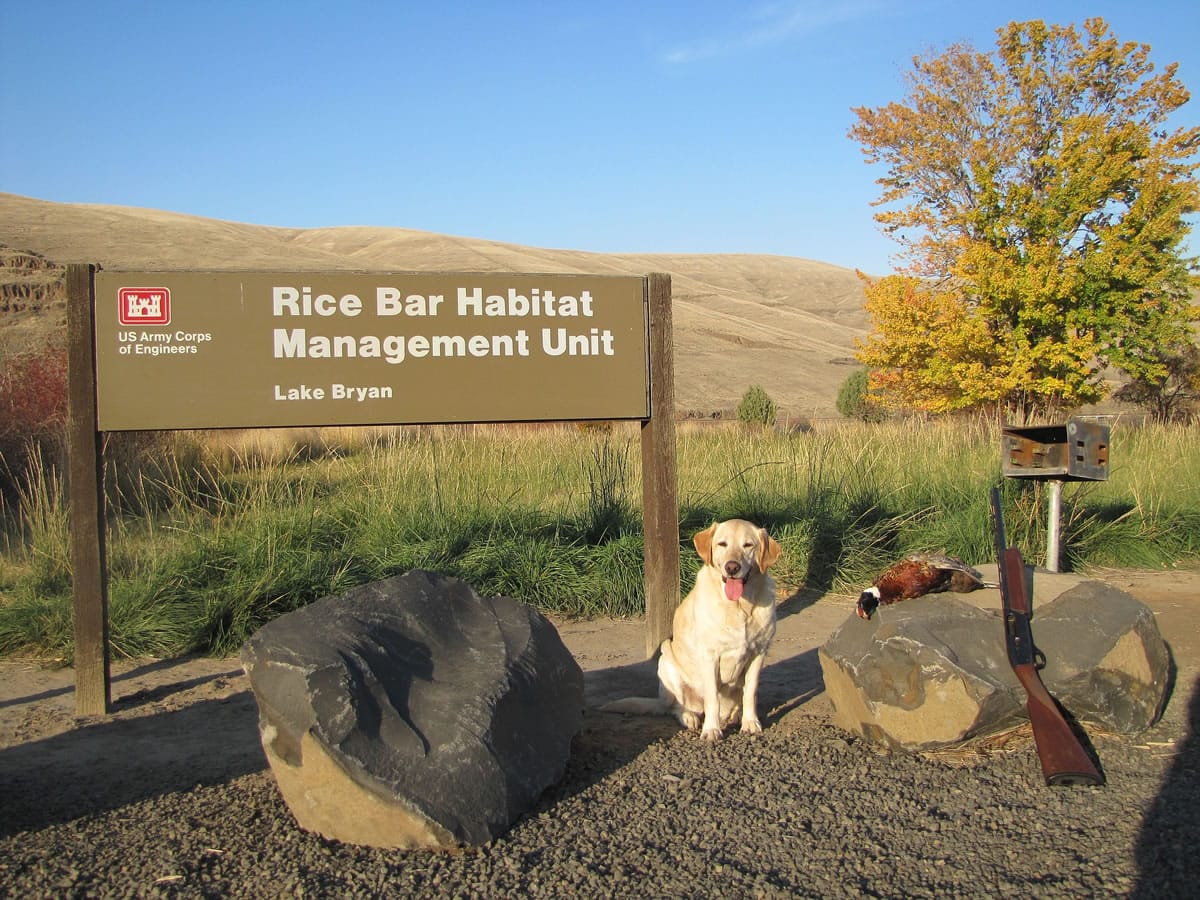Two decades of change have been at work on the landscape of Eastern Washington and upland bird populations — especially pheasants — are the losers.
Big farms grow crops literally to the shoulders of state highways. Windmills cover hillsides. Leaky irrigation systems have been improved.
And largely gone are the brushy ditches, fence rows, weedy patches and too-steep-to-farm eyebrows that once dotted the landscape with habitat for birds, particularly pheasants.
To download the state Department of Fish and Wildlife’s maps of pheasant release sites east of the mountains, go online to: http://wdfw.wa.gov/publications/01644/wdfw01644.pdf
Where once there might have been an idle field in the Yakima Valley, now there’s a crop of corn to produce ethanol. A weedy ridge towering over the Snake River now is laced with roads to access a group of wind turbines.
The pheasant harvest in 2013 in Eastern Washington was one of the lowest on record.
Brian Calkins, small game section manager for the state Department of Fish and Wildlife, is hopeful the 2014 season will see an improvement.
“Based on winter and spring weather conditions, we are optimistic that our pheasant harvest will rebound,” Calkins told Pheasants Forever, a nationwide conservation group. “Adding to our habitat base, several thousand acres of permanent cover were seeded with forbs (broad leaf plants) in southeast Washington this year specifically to improve brood rearing habitat for pheasants.”
Eastern Washington also had a mild winter, relatively dry spring and dry summer, which likely will help with wild pheasant production
However, put-and-take hunting on release sites owned by the state or federal governments is becoming a bigger part of the pheasant picture in Eastern Washington.
Thousands of roosters will be released this fall in several eastside counties. District biologists for the Department of Fish and Wildlife mention the pheasant-release program prominently in their hunting prospects for 2014.
Here is a summary of those hunting prospects:
Asotin-Garfield-Columbia-Walla Walla counties — Pheasant populations appear to have stabilized after two decades of decline.
Release sites include Rice Bar, Willow, Mill Creek and Hollebeke habitat management units of the U.S. Army Corps of Engineers and Asotin and Wooten wildlife areas of the state.
Lincoln-Spokane-Whitman counties — Crow counts (population index surveys) for pheasants in 2014 were 7 percent worse than the four-year average.
The weather was conducive to chick survival, so wild production should bump up some.
Pheasants will be released at Fishtrap Lake near Sprague, at John Henley HMU on the Whitman County side downstream of Little Goose Dam and at Central Ferry HMU on the east side of Highway 127 at the Central Ferry bridge.
Good populations of quail have been observed in south Spokane and Whitman counties.
Yakima-Kittitas counties — The pheasant harvest in 2013 was among the lowest in recent history. There are few wild pheasants outside the Yakima Indian Nation lands.
The trend on the Yakima nation lands also is on the decline as idle land that provided habitat is converted to crops, especially grain farming or corn for ethanol.
Public hunting is allowed on portions of the Yakama Indian Nation, with the bird season opening Saturday. A tribal permit is required.
Tribal officials observed 0.36 pheasants per mile this year, down slightly from 0.39 in 2013 but better and 2011 or 2012. The 0.36 per mile is about average.
Quail counts are improved on the reservation from 2013.
For more information about hunting on the reservation, go online to www.ynwildlife.org.
Birds will be released this season at Sunnyside Wildlife Area.
Quail hunting also can be quite good at times in the Yakima River valley.
Benton-Franklin counties — The 2013 harvest was down 13 percent from 2012 despite an increase in number of hunters.
Pheasants will be released at the Hope Valley unit of the Sunnyside-Snake River Wildlife Area plus the Corps’ Big Flat and Lost Island habitat management units along the Snake River.
Grant County — This is Washington’s top pheasant-harvest county. A good prospect for wild birds is the Desert unit of the Columbia Basin Wildlife Area complex. A mix of wild and released roosters will be found in the lower Crab Creek, Gloyd Seeps, Quincy and Dry Falls units.
The county also has a good quail population.




